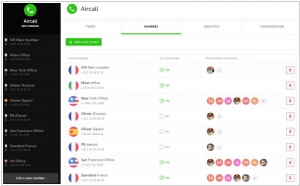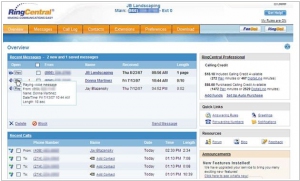Aircall vs RingCentral
March 18, 2025 | Author: Adam Levine
14★
Cloud-based phone system and call center software solution. Instant set-up. Integrates with your favourite CRM and Helpdesk. No hardware, no deskphone.
35★
All your communications on one platform. Team messaging with file sharing, tasks and more. All-in-one cloud phone, team messaging & video conferencing. HD-quality video conferencing with screen sharing. Outbound and inbound contact center and digital customer engagement.
Aircall and RingCentral, at first glance, seem remarkably similar, much like two highly intelligent life forms independently inventing the telephone on opposite sides of the galaxy and then wondering why they keep getting each other’s calls. Both are cloud-based, designed to let businesses talk to customers without the need for those old-fashioned desk phones that people now use as paperweights. They integrate seamlessly with CRMs, have enough call-routing magic to make even a Vogon bureaucracy seem efficient and ensure that people in different locations can communicate without requiring a team of engineers or a pan-galactic translator.
But, of course, they are not the same. Aircall, being the younger and Frenchier of the two (launched in 2014), focuses on small to mid-sized businesses that like their phone systems simple, elegant and preferably not requiring a week-long seminar to understand. It has a delightful shared inbox feature, which allows teams to handle calls as if they were passing around a particularly exciting baguette. However, it does not include video conferencing, presumably because it assumes that if you wanted to see people’s faces while talking, you would meet them in person—perhaps over wine.
RingCentral, on the other hand, is the grizzled space veteran of this tale, founded in 1999 in the U.S. and aiming squarely at enterprises that need a communication system that can handle everything from voice calls to video meetings to intergalactic distress signals. Unlike Aircall, it doesn’t just dabble in phone calls—it provides an entire Unified Communications as a Service (UCaaS) empire, including video meetings and AI-powered analytics to tell you whether you sounded sufficiently professional. While Aircall keeps it lean and integration-friendly, RingCentral goes full "everything and the kitchen sink," ensuring that if your company has complex communication needs, they are well and truly covered.
See also: Top 10 Business Phone systems
But, of course, they are not the same. Aircall, being the younger and Frenchier of the two (launched in 2014), focuses on small to mid-sized businesses that like their phone systems simple, elegant and preferably not requiring a week-long seminar to understand. It has a delightful shared inbox feature, which allows teams to handle calls as if they were passing around a particularly exciting baguette. However, it does not include video conferencing, presumably because it assumes that if you wanted to see people’s faces while talking, you would meet them in person—perhaps over wine.
RingCentral, on the other hand, is the grizzled space veteran of this tale, founded in 1999 in the U.S. and aiming squarely at enterprises that need a communication system that can handle everything from voice calls to video meetings to intergalactic distress signals. Unlike Aircall, it doesn’t just dabble in phone calls—it provides an entire Unified Communications as a Service (UCaaS) empire, including video meetings and AI-powered analytics to tell you whether you sounded sufficiently professional. While Aircall keeps it lean and integration-friendly, RingCentral goes full "everything and the kitchen sink," ensuring that if your company has complex communication needs, they are well and truly covered.
See also: Top 10 Business Phone systems




